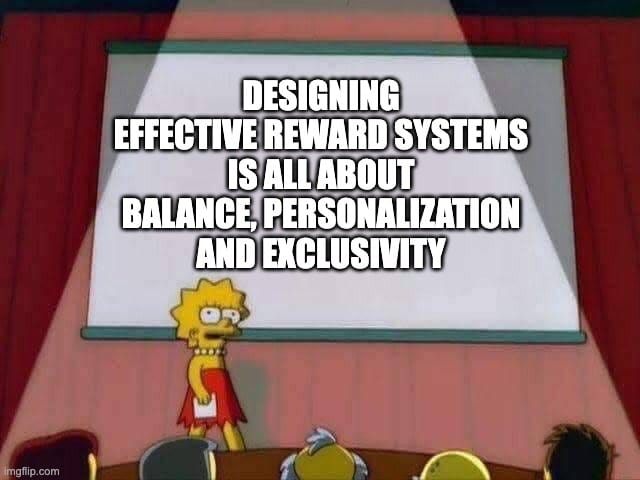Designing Reward Systems to Encourage Spending in Mobile Games

Introduction to Reward Systems in Mobile Games
Reward systems are crucial in mobile games for encouraging spending and enhancing player engagement. A well-designed reward system can significantly increase user retention, boost in-app purchases, and create a more enjoyable gaming experience. In this blog, we will explore various aspects of reward systems in mobile games, including their importance, types, best practices, and future trends.
What Are Reward Systems in Mobile Games?
At their core, these systems leverage the psychological principles of motivation and reinforcement to incentivize desired player behaviors, such as making in-app purchases or engaging with the game more frequently.
Reward systems tap into our innate desire for achievement, recognition, and a sense of progression. By offering virtual rewards – be it in-game currency, exclusive items, or status symbols – developers create a compelling feedback loop that encourages players to invest time and resources into the game experience.
The psychological underpinnings of reward systems lie in the principles of operant conditioning and dopamine. When players receive rewards, their brains release dopamine, which reinforces the behavior that led to the reward, creating a pleasurable sensation that motivates them to repeat the action.
Effective reward systems not only drive initial engagement but also foster long-term retention and loyalty, ultimately translating into increased revenue streams for game developers.
Different Types of Reward Systems in Mobile Games
Mobile game reward systems come in various forms, each catering to different player motivations and gameplay mechanics. Here are some of the most prevalent types:
1. Daily Rewards
Daily rewards are a staple in many mobile games, incentivizing players to log in and engage with the game on a consistent basis. These rewards can take the form of in-game currency, power-ups, or exclusive items, and are often presented as a "login bonus" or a "daily spin" mechanic.
The allure of daily rewards lies in their ability to create a sense of anticipation and habit-forming behavior. Players are motivated to check in regularly, as missing a day means potentially missing out on valuable rewards.
2. Achievement Rewards
Achievement rewards are tied to specific in-game accomplishments, such as completing a level, defeating a boss, or reaching a certain milestone. These rewards serve as a tangible recognition of a player's skills and dedication, fostering a sense of pride and accomplishment.
Achievement rewards can range from cosmetic items, like character skins or avatar customizations, to gameplay-enhancing rewards, such as powerful weapons or abilities. They not only incentivize players to progress through the game but also encourage them to explore all aspects of the gameplay experience.
3. In-Game Currency Rewards
In-game currency rewards are a fundamental component of many mobile games, as they enable players to purchase various items, upgrades, or advantages within the game. These rewards can be earned through gameplay, completing quests or challenges, or as part of a loyalty program.
By offering in-game currency rewards, developers create a compelling incentive for players to engage with the game more frequently and potentially make real money purchases to supplement their in-game funds.
4. Social Rewards
Social rewards tap into the inherent human desire for connection and recognition within a community. These rewards can take the form of leaderboards, where players can compete against friends or other players, or social sharing features that allow players to showcase their achievements on various platforms.
Social rewards not only foster a sense of competition and camaraderie but also serve as a powerful marketing tool, as players share their experiences and accomplishments with their social circles, potentially attracting new players to the game.
Best Practices for Designing Effective Reward Systems

While reward systems can be powerful drivers of engagement and monetization, their effectiveness hinges on careful design and implementation. Here are some best practices to consider when designing reward systems for mobile games:
1. Balance Rewards and Progression
Striking the right balance between rewards and progression is crucial. If rewards are too easily attainable, they may lose their appeal and fail to motivate players. Conversely, if they are too scarce or difficult to obtain, players may become frustrated and disengage from the game.
Effective reward systems should create a sense of progression, where players feel a steady stream of accomplishments and rewards as they advance through the game. This balance not only keeps players engaged but also encourages them to invest more time and resources into the game.
2. Ensure Fairness and Transparency
Perceptions of fairness and transparency are essential for maintaining player trust and satisfaction. Reward systems should be clearly communicated, with transparent rules and requirements for earning rewards.
Additionally, developers should strive to create a level playing field, where rewards are earned based on skill, effort, or strategic decision-making, rather than being solely dependent on real-money purchases or pay-to-win mechanics.
3. Leverage Limited-Time Offers and Exclusivity
Creating a sense of urgency and exclusivity can be a powerful motivator for players. Limited-time offers, such as time-limited events or exclusive rewards, tap into the fear of missing out (FOMO) and encourage players to engage with the game more actively during these periods.
However, it's important to strike a balance and not overuse these tactics, as they may lead to player fatigue or resentment if perceived as overly manipulative.
4. Personalize Rewards and Progression
With the wealth of player data available, developers can leverage analytics and personalization techniques to tailor reward systems to individual player preferences and behaviors. By offering personalized rewards and progression paths, developers can create a more engaging and satisfying experience for each player.
Personalization not only increases the perceived value of rewards but also fosters a stronger emotional connection between players and the game, ultimately driving greater engagement and retention.
Optimizing Reward Systems with Data and Analytics
In today's data-driven landscape, game developers have access to a wealth of information about player behavior, preferences, and engagement patterns. By leveraging data and analytics, developers can optimize their reward systems for maximum effectiveness and impact.
1. Player Segmentation and Targeting
Through data analysis, developers can segment their player base based on various factors, such as playtime, spending habits, or progression rates. This segmentation allows for targeted reward offerings, tailored to specific player groups.
For example, high-spending players may be offered exclusive rewards or early access to new content, while free-to-play players could receive incentives to encourage their first purchase or engagement with monetization mechanics.
2. A/B Testing and Experimentation
A/B testing and experimentation are powerful tools for optimizing reward systems. By testing different reward structures, values, or presentation methods, developers can identify the most effective approaches for driving desired player behaviors.
This data-driven approach not only helps refine reward systems but also provides valuable insights into player motivations and preferences, informing future game design decisions.
3. Predictive Analytics and Churn Prevention
Predictive analytics can be leveraged to identify players at risk of churn or disengagement. By analyzing player behavior patterns and in-game metrics, developers can proactively offer targeted rewards or incentives to re-engage these players before they become inactive.
Churn prevention strategies, such as personalized reward campaigns or win-back offers, can help retain valuable players and minimize the costs associated with acquiring new ones.
Future Trends in Mobile Game Reward Systems
As the mobile gaming industry evolves, new trends and innovations are emerging in reward systems. Here are some potential future developments that could shape the way rewards are designed and implemented:
1. Blockchain and Cryptocurrency Integration
With the rise of blockchain technology and cryptocurrencies, we may see an increasing integration of these technologies into mobile game reward systems. Players could potentially earn and trade unique, verifiable digital assets or cryptocurrencies within games, creating new avenues for monetization and player engagement.
2. Augmented Reality (AR) and Virtual Reality (VR) Rewards
As AR and VR technologies become more accessible and mainstream, mobile games may incorporate rewards that leverage these immersive experiences. Imagine earning virtual rewards that can be experienced or displayed in the real world through AR, or unlocking exclusive VR environments or experiences as rewards within games.
3. Personalized and Adaptive Reward Systems
With advancements in artificial intelligence and machine learning, reward systems may become even more personalized and adaptive. AI algorithms could analyze player behavior, preferences, and in-game data to dynamically adjust reward structures and offerings, creating a truly tailored and engaging experience for each individual player.
4. Social and Community-Driven Rewards
As the importance of social connections and community within mobile games continues to grow, we may see an increased emphasis on social and community-driven rewards. These could include collaborative challenges, shared rewards, or even the ability to gift or trade rewards among players, fostering a stronger sense of community and social engagement.
Conclusion: Maximizing Spending with Effective Reward Systems
In conclusion, well-designed reward systems are essential for encouraging spending and enhancing player engagement in mobile games. By tapping into the psychological motivations of players and offering compelling rewards, developers can create a feedback loop that encourages continued investment of time and resources into the game experience.
Effective reward systems strike a delicate balance between challenge and reward, progression and exclusivity, creating a sense of accomplishment and anticipation that keeps players engaged and motivated. By leveraging data and analytics, developers can optimize their reward offerings, tailoring them to specific player segments and preferences, and continuously refining their strategies for maximum impact. Staying ahead of future trends will further ensure the success of these systems.
Enhance Your Reward Systems with Segwise.ai
Are you looking to take your mobile game's reward systems to the next level? Segwise’s AI Agents can help you automatically identify causal metric drivers and perform root cause analysis, allowing you to optimize your reward systems for maximum impact.
By leveraging Segwise's advanced capabilities, you can gain valuable insights into player behavior, preferences, and engagement patterns, enabling you to design and implement highly effective and personalized reward systems that drive spending and foster long-term player loyalty.
Unlock the full potential of your mobile game's monetization strategy with Segwise.ai.

Comments
Your comment has been submitted successfully!